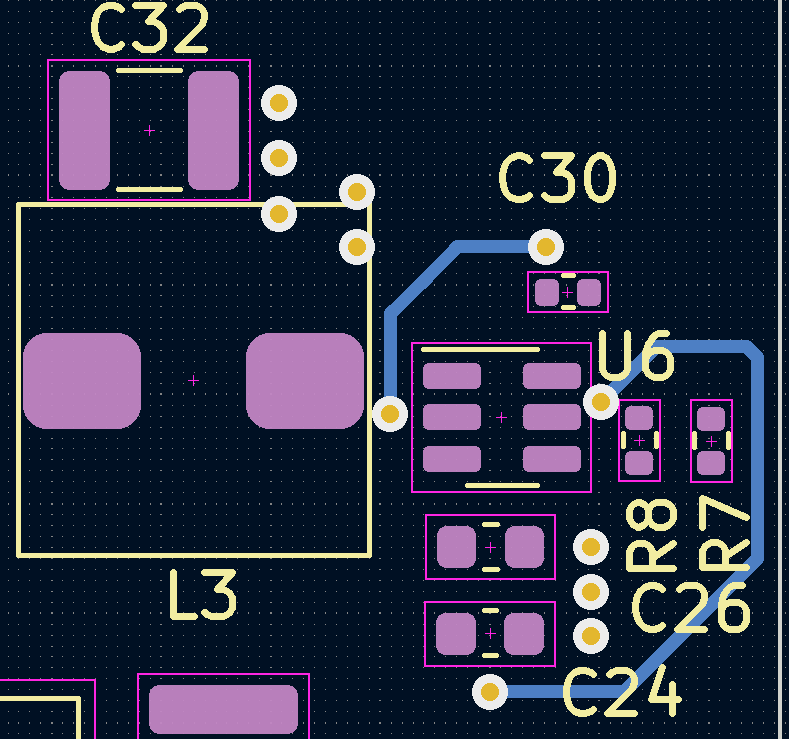I used the LMR51430XFDDCR as a DC/DC power converter on my PCB. Upon connecting a fully charged 3-cell LiPo battery (12.5V), the converter instantly failed. The PCB is designed to draw no more than 2.5A, while the converter can supply up to 3A. Additionally, the IC is rated for a maximum input voltage of 40V, which is well above the 12.5V from the battery. I used TI's WEBENCH Power Designer to create the schematic and followed the layout guidelines provided in the datasheet. The PCB is made of 4 layers(upper layer: signal, in1: GND, in2: 3.3V and the forth layer, on the other side is also signal). Given these precautions, I don't know why the IC was damaged.
| Reference | Part |
|---|---|
| C24 | CL10A475KO8NNNC |
| C26 | GRM188R71H104KA93D |
| C30 | GRM155R71C104KA88D |
| L3 | 744314650 |
| R7 | CRCW0402162KFKED |
| R8 | CRCW040222K1FKED |
| C32 | GRM32ER61C476KE15L |
The TI's recommendation for the lmr51430XFDDCR:
My layout:
The GND pour:
The inductor characteristics:
The copper pour on the top layer:
The GND plane(second layer):
The 3.3V layer:
The signal layer on the bottom:









